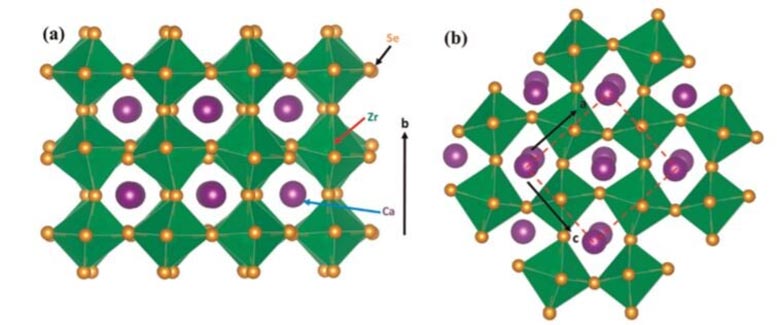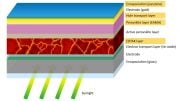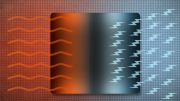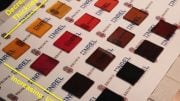
For solar cells to be widely used in the coming decades, researchers must resolve two major challenges: increasing efficiency and lowering toxicity.
Engineers have characterized the thermal energy conversion mechanism in the lattice of an advanced nanomaterial called chalcogenide perovskite and demonstrated its ‘tunability’ — important for its potential use in solar energy generation.
For solar cells to be widely used in the coming decades, researchers must resolve two major challenges: increasing efficiency and lowering toxicity.
Solar energy works through a process that converts light into energy called the photovoltaic effect. Certain light-sensitive materials when packaged together in a “cell” have the ability to convert energy from light into electricity.
Most of today’s solar cells require a highly processed form of Silicon. The processing results in toxic effects on humans and the environment. According to an article published in AZO Materials in 2015, many strides have been made since the first solar cell was developed, but average efficiency rates are still well below 30 percent, with many cells barely reaching 10 percent efficiency.

CaZrSe3 in the distorted orthorhombic perovskite phase depicted from the (a) side view and (b) top view. Credit: Ganesh Balasubramanian, Eric Osei-Agyemang and Challen Enninful Adu
Researchers have recently been working with a material — an emerging chalcogenide perovskite CaZrSe3 — that has shown great potential for energy conversion applications because of its notable optical and electrical properties.
“These materials hold extreme promise for solar energy conversion applications,” says Ganesh Balasubramanian, assistant professor of mechanical engineering at Lehigh University’s P.C. Rossin College of Engineering and Applied Science. “One can potentially design them as solar thermoelectric materials that convert thermal energy from the sun to usable electric power.”
Balasubramanian, working with postdoctoral student Eric Osei-Agyemang and undergraduate Challen Enninful Adu, have for the first time, revealed first-hand knowledge about the fundamental energy carrier properties of chalcogenide perovskite CaZrSe3. They have published their findings in NPJ Computational Materials in an article called “Ultralow lattice thermal conductivity of chalcogenide perovskite CaZrSe3 contributes to high thermoelectric figure of merit.” This work complements a recent article by the same team published in Advanced Theory and Simulations called “Doping and Anisotropy-Dependent Electronic Transport in Chalcogenide Perovskite CaZrSe3 for High Thermoelectric Efficiency.”
“Together they provide a holistic look at the transport properties of these materials,” says Balasubramanian. “They also demonstrate that chalcogenide perovskite CaZrSe3 can potentially be used for waste heat recovery or solar energy conversion to electricity.”
To arrive at their results, the team performed quantum chemical calculations examining the electronic and lattice properties of these materials to derive useful material transport information.
The news that energy transport through advanced materials such as chalcogenides can be tuned by nano structuring should be welcomed by other researchers in the field, says Balasubramanian, bringing scientists closer to applying these techniques to achieve a solar energy production method that is cheaper, more efficient and less toxic.
Reference: “Ultralow lattice thermal conductivity of chalcogenide perovskite CaZrSe3 contributes to high thermoelectric figure of merit” by Eric Osei-Agyemang, Challen Enninful Adu and Ganesh Balasubramanian, 4 December 2019, npj Computational Materials.
DOI: 10.1038/s41524-019-0253-5









Be the first to comment on "Chalcogenide Perovskite Energy Transport Mechanism Mapped for Solar Energy Use"